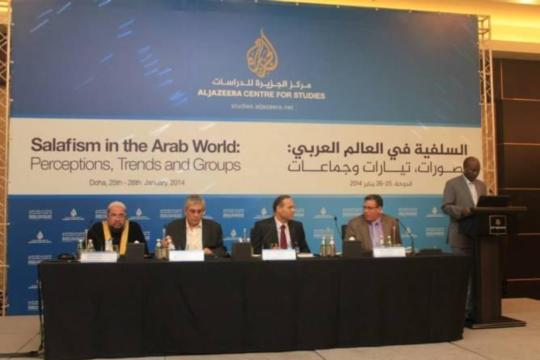
 |
| Opening remarks at the conference by director of Al Jazeera Center for Studies, Dr. Salah Eddin Elzein [Al Jazeera] |
| Abstract
Salafism has been used interchangeably with Islamist movements or terrorist groups, but such stereotypes were challenged during Al Jazeera Center for Studies’ conference “Salafism in the Arab World: Perceptions, Trends and Challenges” held in Doha January 18 and 19, 2014. The conference brought together experts on Salafism from across the globe as well as served as a launch for the publication of the Center’s book, “The Salafist Phenomenon: Organizational Diversity and Policies.” This report summarizes key findings from the conference, briefly discusses contemporary Salafi trends according to a paper by one of the conference’s participants, and ends with an in-depth discussion of the findings with examples from speakers and participants. |
Introduction
The term Salafism tends to elicit images of bearded men in long white dresses and women covered in black from head to toe, or bearded men holding assault rifles, or the aftermath of suicide attacks. Furthermore, Salafism is often used interchangeably with Islamist movements – movements typically labelled as and associated with terrorism by the international community. These stereotypes were challenged during Al Jazeera Center for Studies’ conference “Salafism in the Arab World: Perceptions, Trends and Challenges” held in Doha January 18 and 19, 2014. Participants from across the globe offered a wealth of information about Salafism in the Arab world, but the key takeaway was the movement is simply too vast to be confined to one definition or manifestation. This is particularly important if both regional and international research on the Middle East is to be more scientific in approaching or studying what are often called “controversial topics.” This report discusses findings on Salafism in the Arab world from the conference’s three main sessions and the closing roundtable discussion. The first section is a summary of general findings, the second is a brief discussion on Salafi trends according to one of the conference’s participants, and the third is a more in-depth discussion of the findings with examples from speakers and participants.
Summary of findings
The following key findings were points of consensus during the conference on Salafism:
• Salafi or Salafism has no single definition – its definition is often shaped by the environment in which it is born.
• The term Salafism can be traced to the early days of Islam’s history and its applicability has varied across the Arab world, ranging from movements limited to scientific or scholastic applications to movements calling for entry into the political sphere all the way to movements calling for physical Jihad to attain an Islamic state.
• Many of the participants made calls for Salafi movements to become reacquainted with the reality of the world in which they live – in other words, a key finding was that Salafi movements could not continue to operate in a vacuum if they hoped to be accepted by other groups while vying for political voice and clout, particularly in increasingly diverse societies.
• Salafi leaders who spoke at the conference also said Salafist groups should pursue a more moderate stance that does not implement an “us versus them” clause of exclusivity in which those who hold different opinions are automatically named as “Kafirs” or those who reject faith.
• While political and military groups continue to identify with Salafism’s teachings (in particular a return to “pure Islam” far from interpretation), it is a religious label at its very core.
• The term itself has become associated with a “scary” phenomenon, one which has been used in particular during the Arab Spring by Arab and non-Arab leaders and repressive governments as a justification to wage war on civilian populations.
• The term has also been used to fan the flames of Islamophobia in the West, often interchangeably with Islam and Muslims, confusing audiences which may be unfamiliar with the differences of those who ascribe to Islam versus those who ascribe to a Salafi ideology or reading of Islam.
• Salafist and Jihadist are simply not synonymous terms – many Salafist groups pursue only dialogue or knowledge as their key mission.
• Questions around the relationship of Salafi groups to politics, the economy, non-Muslims and foreign entities could be asked about any group with religious leanings which attempts to enter these realms.
• While the topic of the conference was Salafism in the Arab world, Salafi movements have been emerging in other continents in recent years, including Europe, the Americas, and Asia.
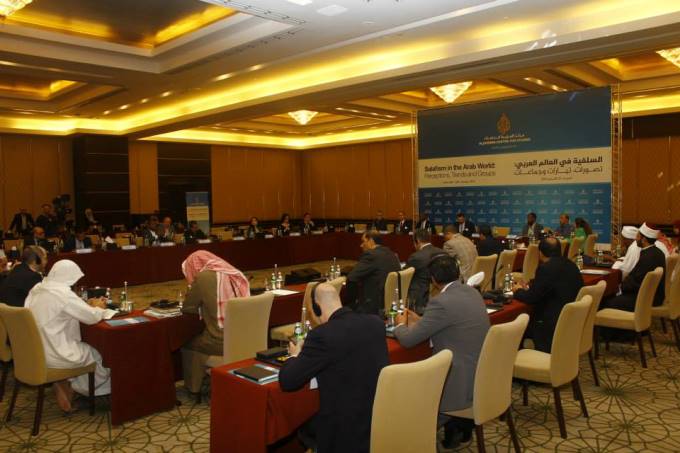 |
| Closing roundtable discussion on Salafism in the Arab world and beyond [Al Jazeera] |
Salafi trends
One of the papers submitted to the conference was that of Abdelhai Yousif Abdel Rahim Elhag, deputy chairman of the Sudan Scholars’ Association. Elhag spoke at length during the conference about contemporary religious discourse of the Salafis. In his paper, he identifies four trends in the Salafi movement:
1. The first trend suffers from outdated ideas completely disconnected from the present reality.
2. The second trend suffers from stagnation, pursuing outdated ideological battles which are no longer even an issue.
3. The third trend pursues theoretical affairs which have no urgency or relevance to current times, turning away from politics and instead focusing on outer appearances (such as clothing) that have nothing to do with the real lives of people or their dealings.
4. The fourth trend is very close to authority figures and defends government leaders regardless of who they are or what they stand for.
 |
| Abdelhai Yousif Abdel Rahim Elhag, member of Islamic Fiqh Academy in Sudan, speaks about contemporary trends in the Salafi movement during the conference [Al Jazeera] |
In Elhag’s opinion, these trends apply to current Salafi movements, yet another reason making it difficult to pinpoint a single definition for the movement or point to a single manifestation as the embodiment of Salafi teachings.
In-depth discussion
Dr. Basheer Nafi, senior researcher at the Center, began by explaining that while some use the term Salafism to encompass all groups ascribing to some form of political Islam, others use a more narrow definition, applying the term to groups which specifically and exclusively call themselves Salafi. The term dates to the third century after migration in the Islamic calendar and was used at the time primarily by Ahlul Hadith, (1) foremost of them Imam Ahmad bin Hanbal.
 |
| Dr. Basheer Nafi explains there is no consensus on the definition of Salafism or Salafis [Al Jazeera] |
Guests, speakers and panellists included a mix of researchers and religious leaders from Lebanon, Sudan, Syria, Iraq, Morocco, Tunisia, Yemen, Spain, France and Egypt. Each of the participants was able to offer a unique view on the current and future manifestations of the Salafi trend. Dr. Salem El-Rafei, Chairman of the Association of Muslim Scholars in Lebanon, said during the conference, “Salafism wasn’t created in a single environment – the environments differed, creating different types of Salafism.” In his eyes, Salafism started as a “Dawah movement combatting innovation in religion,” evolving into a more political or Jihadist movement based on historic and geographic contexts. As an example, he spoke about the Lebanese Salafi movement and the effect the political environment had on whether or not the movement’s members participated in the process.
Also from Lebanon, Dr. Saoud Mawla, professor of sociology, discussed how the movement emerged in the country in the 1960s in an effort to protect followers and interests of Sunni Islam in the country, having the added effect of distancing them from other groups in society. He explained further that many of the country’s youth turned to Salafism when the Future Movement failed to protect Sunni Muslims in the country. High unemployment among the youth was a key reason that compelled them to replace their support for nationalist movements with support for Salafist ones.
Conference guest Dr. Marwan Kabalan, a Syrian researcher, agreed with Dr. Mawla’s assessment, saying, “Salafi movements have historically formed in response to one of two things: the state fails to address internal societal needs or the state fails to address external threats to protect its people.” This is part of the reason the Salafi movement and its dialogue to local communities often changes and is inconsistent or unstable, according to Dr. Abdul Rahman Alhaj Ibrahim, a speaker at the conference and professor of Islamic Studies.
However, the formation of Salafi movements has often been the antithesis of a solution upon examination of its manifestations in the Arab world, because rather than addressing the missing components of society, the movements often became entrenched in their own internal strife. For Dr. Salma Belaala, the divisions within the group are a result of the Salafi movement’s desire to erase differences of opinions in high-conflict contexts. For Mohamed Abdelouhab Rafiqui, a leading figure of the Salafi trend in Morocco, the differences are a result of contradictions within the entire movement, something that makes it even more important for researchers to clearly make distinctions when analysing the movement.
 |
| Naomi Ramirez Diaz discusses the relevance and current reality of Salafism in Syria [Al Jazeera] |
The conference ended with speculations from participants about the future of the Salafi movement in the Arab world. Naomi Ramirez Diaz, a researcher specializing in political Islam and one of the conference’s panellists, theorized that the most important or visible Salafi movement currently was in Syria. She argued the Assad regime’s vicious attacks on what started as a peaceful revolution eventually resulted in three main groups of Salafist armed groups in Syria, including the Islamic State of Iraq and the Levant (ISIL), Al-Nusra Front and the Syrian Islamic Front (SIF). ISIL is seen as the most stringent of the three, running into armed conflicts with the opposition’s Free Syrian Army (FSA) and SIF over its attacks on journalists and activists in Aleppo and Idlib. The Al-Nusra Front is closely associated with Al-Qaeda and its fighters, and although the majority are Syrian, they call for an Islamic state. The SIF is the most diverse of the groups, and is made up of various armed factions, some of which describe themselves as Salafi and others which simply view themselves as conservative Muslims.
Another key Salafi movement which is currently highly visible can be observed in Egypt and follows Elhag’s categorization of a Salafi trend which tends to ally itself with whoever is in power. Dr. Tarek El-Zomor, imprisoned for 30 years under former president Hosni Mubarak and chairman of the Building and Development Party, said that Egypt’s Salafi An-Noor Party acted in a largely contradictory manner after the January 25, 2011 Egyptian revolution, refusing to compromise with secular parties during the rule of Mohamed Morsi only to turn around and assist in the July 3, 2013 coup and continue to ally themselves with those parties. He also pointed out the party’s initial hesitation about the revolution, causing them to take advantage of the situation when they saw the discord which initiated the coup.
Conclusion
The Al Jazeera Center for Studies launched the recent publication of their book, “The Salafist Phenomenon: Organizational Diversity and Policies,” during the opening session of the conference. The book contains analysis of the Salafi movement from 14 authors and experts across the Arab world and was edited by the Center’s researchers Dr. Ezzeddine Abdelmoula, Dr. Basheer M. Nafi and Haoues Taguia. The topics addressed in the book are illustrative of the type of work produced by the Center as well as highly relevant to what is happening in the Arab world as a result of the so-called “Arab Spring.”
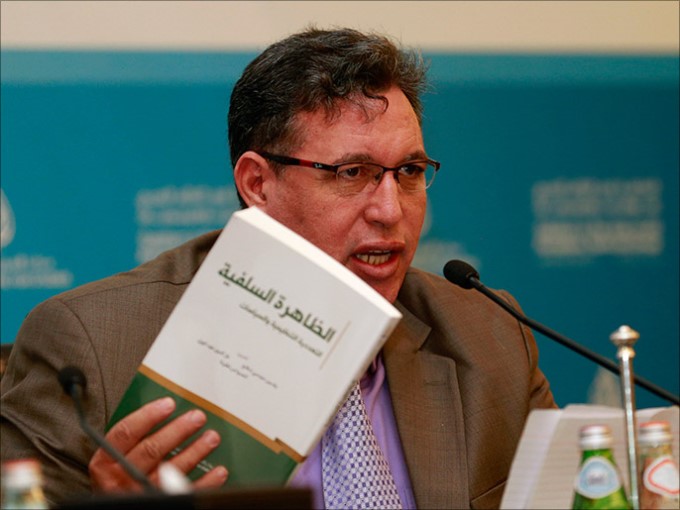 |
| Haoues Taguia, AJCS researcher, speaks about the Center’s book which he assisted in editing, titled, “The Salafist Phenomenon: Organizational Diversity and Policies” [Al Jazeera] |
The Salafism in the Arab World: Perceptions, Trends and Groups conference ended with the door open to further research on the movement. This is particularly true given that several of the participants mentioned their increasing emergence in European countries, Asia and the Americas. Director of the Center, Dr. Salah Eddin Elzein, ended the conference with the following research questions: “Are we on the way to better understanding of other Islamic movements if we begin to understand the Salafi movement better? Can the same questions asked about the Salafi movement at the political level be asked about other Islamic movements? In which direction is the movement headed?”
To conclude, using a scientific and rigorous approach to understanding the movement will do two things: address stereotypes as well as parse out the intricacies which are necessary for comparative and descriptive purposes. This is true of all research which the Center hopes to pursue.
___________________________________
*Malak Chabkoun is a researcher at Al Jazeera Center for Studies. The Arabic report on the conference by Dr. Sidi Ahmed Ould Ahmed Salem served as a source of information for this report and can be found here.
(1) Ahlul Hadith is a term literally translated as “People of Hadith” and is often used interchangeably with the term “Salafi.” It describes those who strictly refer to the authentic Hadith of Prophet Muhammad and the Quran as their guide in religious and social matters.
Conefrence Agenda
Day One | Saturday, January 25, 2014
|
Function |
Details |
| Opening 10:00-10:15 |
Welcome note |
| Session 1 10:15-11:30 |
Salafism: Organizational Diversity and Policies |
| Book Introduction: Al-Dhahira as-Salafiyah: At-Ta’addudiyah al-Tandhmiyah was-Siyasat ("The Salafist Phenomenon: Organizational Diversity and Policies") | Haoues Taguia | |
| Salafism: History, Terminology and Multiple Manifestations | Basheer Nafi | |
| An Insight into the Salafist Phenomenon | Salem El-Rafei | |
| Moderator | (TBC) | |
| Book launch | Al-Dhahira as-Salafiyah: At-Ta’addudiyah al-Tandhimiyah was-Siyasat ("The Salafist Phenomenon: Organizational Diversity and Policies") Publisher: Al Jazeera Center for Studies |
| Tea Break 11:30-12:00 |
|
| Session 2 12:00-14:00 |
Characteristics of the Salafist Phenomenon |
| The Salafist Phenomenon and Religious Discourse | Abdul Rahman AlHaj | |
| The Social Dimension of the Salafist Phenomenon | Saoud El-Mawla | |
| The Political and Regional dimensions of the Salafist Phenomenon | Salma Belaala |
|
| Moderator | Ezzeddine Abdelmoula | |
| Lunch Beak 14:00-15:00 |
|
|
Session 3 15:00- 17:00 |
The Future of Salafist Trends |
| The Future of scholastic Salafist Trend | Abdelhai Yousif | |
| The Future of the Jihadist Salafist Trend | Naomi Ramirez Diaz | |
| The Future of Salafist Awakening Trend (Activist Salafism) | Mohamed Abdelouhab Rafiqui | |
| A Reading into the Future of the Salafist Trends| Tarek El-Zomor | |
| Moderator | Mohammed Alahmari | |
Day Two | Sunday, January 26, 2014
| Function | Details |
| Round table discussion 9:30-12:00 |
Salafism in the Arab, Regional and International Context | All participants |
| Moderator | Salah Eddin El-Zein |
Participants
 |
ABDELHAI YOUSIF ABDEL RAHIM ELHAG is the Deputy Chairman of the Sudan Scholars’ Association, and a member of the Islamic Fiqh Academy in Sudan and the Advisory Board of Al-Bayan Magazine’s Strategic Report. He is also a member of the Board of Trustees of the Organization of Islamic Da’wah, Chairman of the Advisory Board of the Mishkat Organization for Da’wah, and Chairman of Tayba television channel. He is an Associate Professor at the Department of Islamic Culture at the University of Khartoum and has published several papers in the intellectual and political fields. |
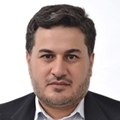 |
ABDUL RAHMAN ALHAJ IBRAHIM is a prominent Syrian opposition figure, Advisor to the Prime Minister of the interim Syrian government for education and one of the founders of the Syrian National Council of 2011. He is also a professor at the International Islamic University and the University of Islamic Sciences in Malaysia, and an author and researcher specializing in political Islam and religious groups in Syria. He has published a number of books and research papers. |
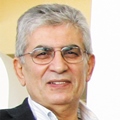 |
BASHEER MOUSA NAFI is a researcher at the Al Jazeera Center for Studies and a former Professor of History and Islamic Studies at Birkbeck College, University of London. He has published several books and research studies on the history of the Salafism, reform movements, Arab nationalism, Iraq and the Palestinian issue. |
 |
HAOUES TAGUIA is a researcher at the Jazeera |